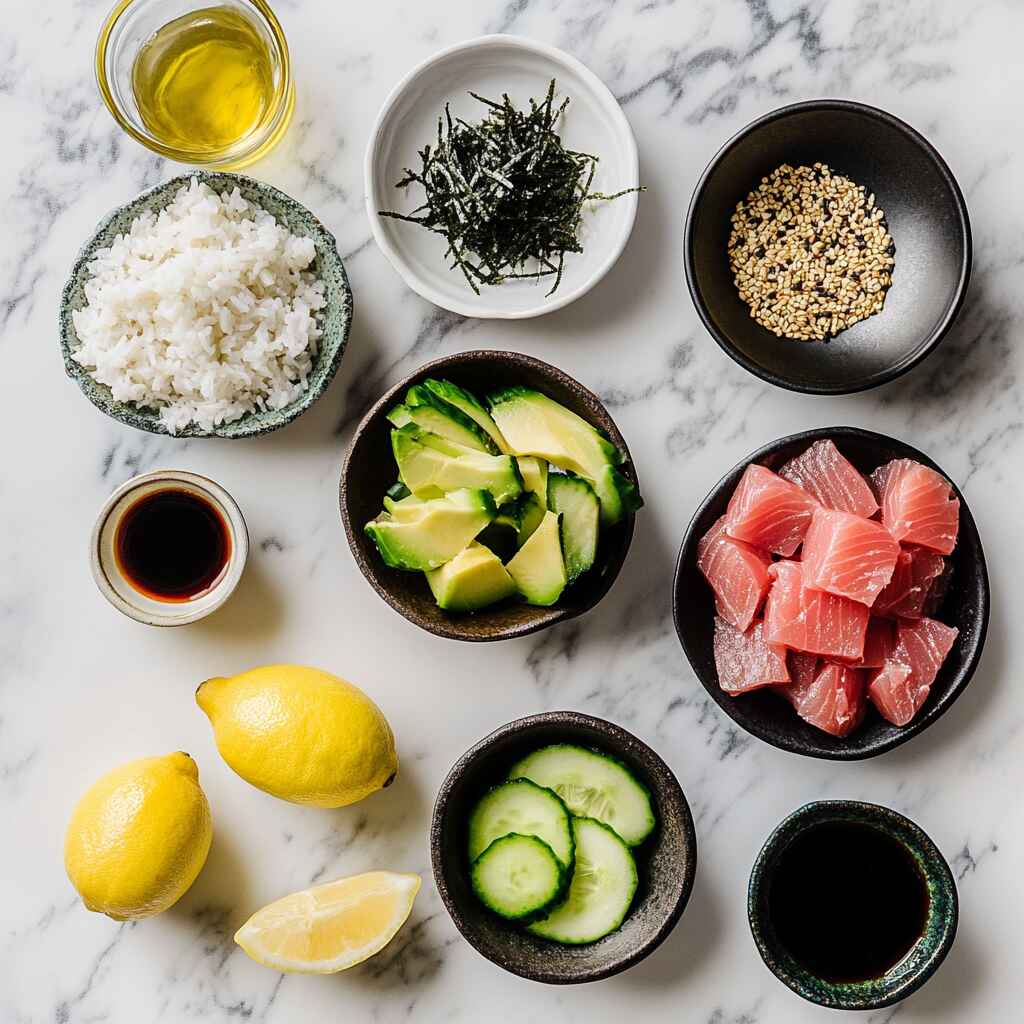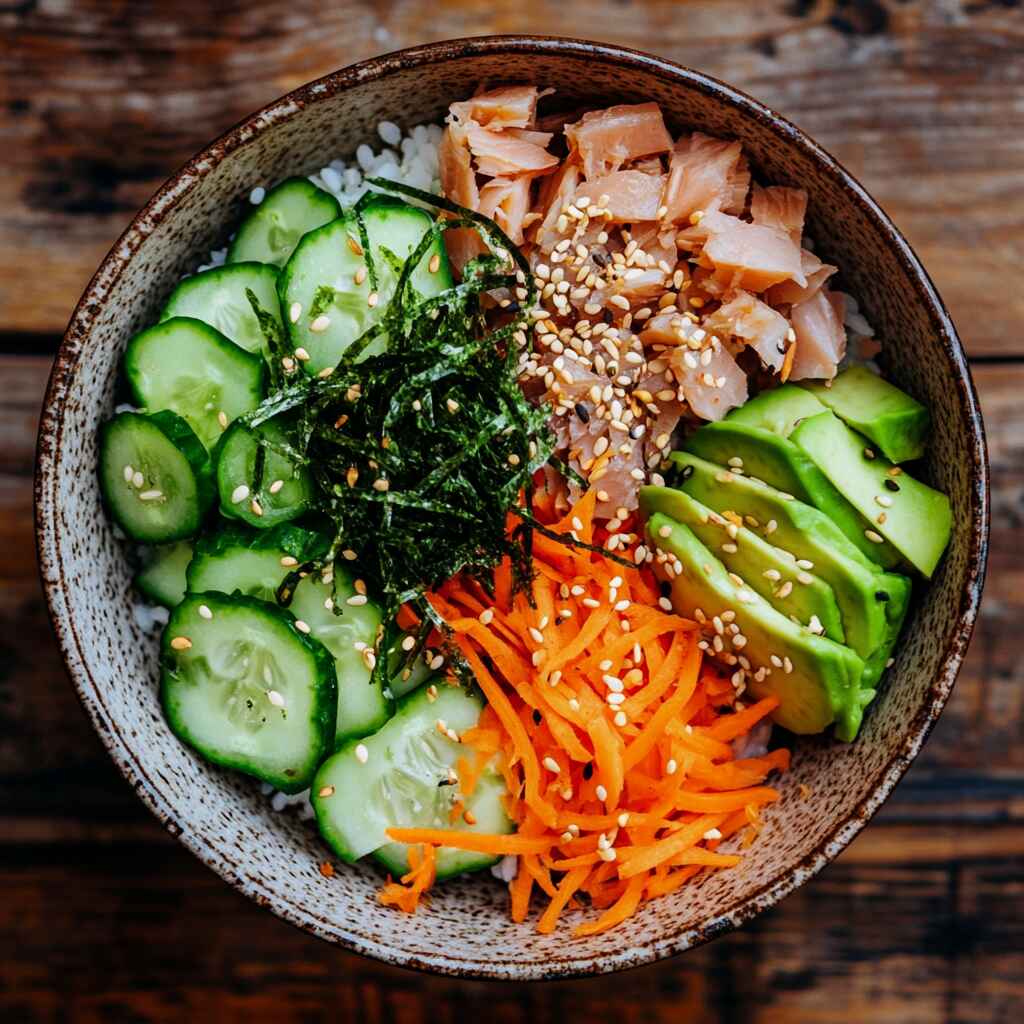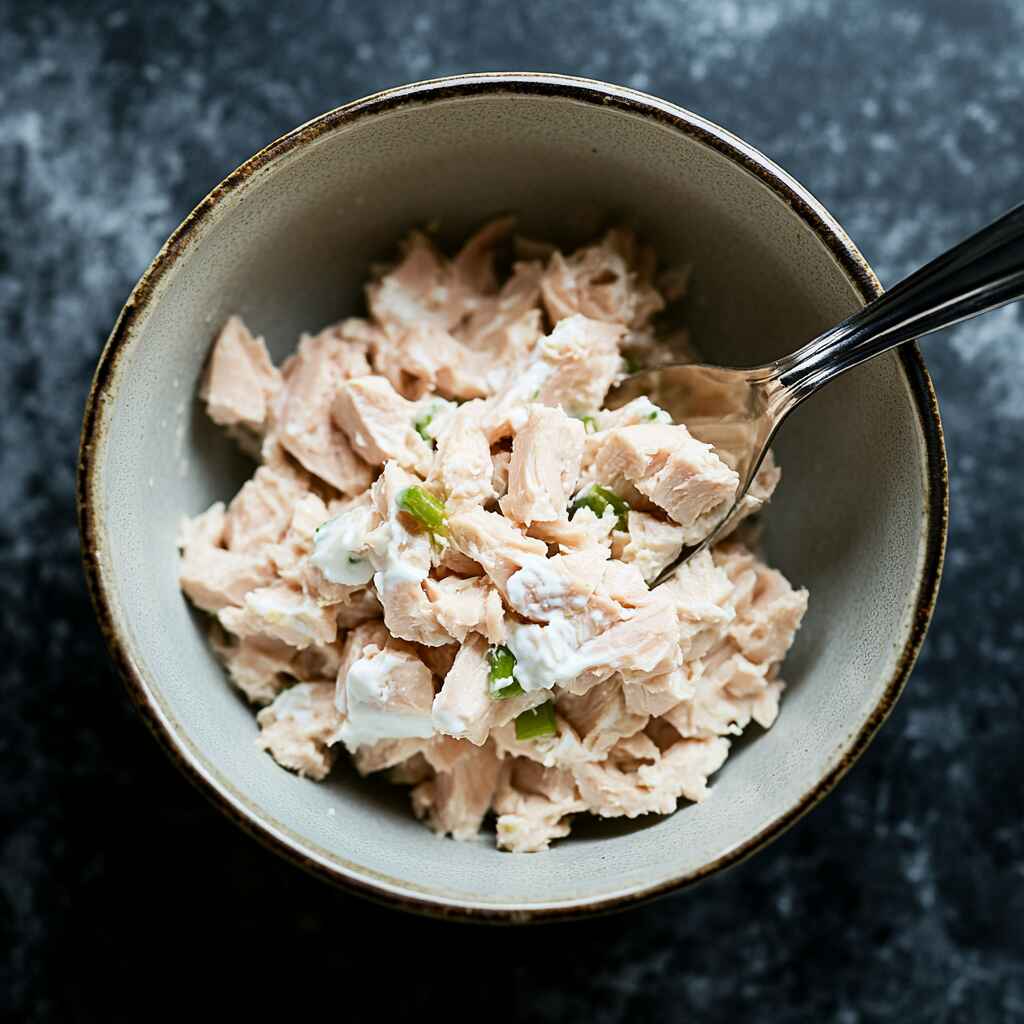If you’re craving something quick, nutritious, and packed with flavor, the tuna rice bowl checks every box. This no-cook classic blends lean protein, satisfying grains, and fresh toppings in one balanced bite. In this article, you’ll learn how to build a delicious tuna rice bowl, what to pair it with, and how to tweak it for your health goals. Whether you’re using canned tuna or going for sushi-style, we’ve got you covered. From ingredients to smart add-ins, we’ll walk through everything and even answer your top questions about this healthy bowl trend.
Table of Contents
Why Tuna Rice Bowls Are a Staple in My Kitchen
From Grandma’s Tuna to My Own No-Cook Reinvention
It all started in my grandma’s tiny Michigan kitchen no stove, just love and resourcefulness. One of her go-to meals? A humble tuna rice bowl. It wasn’t fancy, but it filled you up and made you feel cared for. Years later, when my own life became a whirlwind of deadlines, kids, and zero time to cook, I remembered that tuna rice bowl.
With a few modern upgrades like microwaveable rice, creamy avocado, and Greek yogurt it became a weekly staple. Why? Because the tuna rice bowl delivers every time. It’s satisfying, high in protein, and incredibly fast. And it fits my no-cook lifestyle perfectly.
Whether you’re trying to eat clean or just need a break from takeout, the tuna rice bowl is the kind of recipe that keeps showing up. It’s also budget-friendly, endlessly customizable, and surprisingly filling. For students and busy professionals, this recipe is just as useful as the tips I share in No Cook Recipes for Students. And if you’ve tried vegan high protein meal prep, you’ll love this protein-packed bowl just as much.
The Secret to Making Tuna and Rice Taste Amazing
People often think tuna and rice are boring. Not true you just need the right mix-ins. A classic tuna rice bowl gets leveled up with sesame oil, soy sauce, crunchy cucumber, or even spicy mayo. I sometimes mash my tuna with Greek yogurt or hummus for a tangy, creamy base. Add pickled onions or shredded carrots, and it’s a flavor explosion.
The key is contrast: creamy tuna, soft rice, crisp veggies. For a lighter twist, swap in cauliflower rice. And for more crunch, sprinkle on some toasted sesame seeds or furikake.
Done right, a tuna rice bowl can be downright addictive and you won’t miss the stove one bit.

How to Build the Perfect Tuna Rice Bowl
Start with the Right Tuna (and It Doesn’t Need to Be Fancy)
When people think “tuna rice bowl,” they often imagine sushi-grade ahi tuna, but let’s be real most of us are working with canned tuna. And that’s okay. In fact, canned tuna can be delicious if you use the right kind. Go for solid white albacore in water or olive oil for the best flavor and texture. If you’re plant-based or watching mercury intake, there are even tuna-style alternatives made from legumes that work surprisingly well in a tuna rice bowl.
Once you have your tuna, you can keep it simple with salt and pepper or mix it with Greek yogurt, mustard, a squeeze of lemon, or sriracha for heat. I often add diced celery or red onion for crunch. If you love the creamy texture of poke bowls, try mixing in avocado chunks directly with the tuna.
The Tuna Rice Bowl Formula: Base + Protein + Crunch + Sauce
A great tuna rice bowl comes down to balance. Here’s the formula I use almost every time:
Base: White rice, brown rice, quinoa, cauliflower rice anything goes.
Protein: Tuna (canned, jarred, or raw), plus maybe an egg for extra protein.
Crunch: Cucumber, radish, shredded carrots, edamame, seaweed.
Creamy: Avocado, Greek yogurt, tahini drizzle.
Sauce: Soy sauce, spicy mayo, ponzu, sesame oil.
Toppings: Furikake, sesame seeds, scallions, pickled ginger.
Use a shallow bowl or meal-prep container and layer everything with intention. If you want to make this ahead of time, pack the sauce and crunchy veggies separately to keep everything fresh.
Need more no-cook base ideas? Check out how I mix in fiber and flavor in this protein oats recipe it’s all about building layers, even in cold dishes.

Tuna Rice Bowl Variations for Every Diet
Make It Fit: Low Carb, Dairy-Free, or High Fiber
The beauty of a tuna rice bowl is that it’s endlessly flexible. Whether you’re keto, dairy-free, or focused on fiber, there’s a version that works for you.
For low-carb lovers, swap rice with cauliflower rice or even shredded cabbage. Add sliced avocado, pickled jalapeños, and a drizzle of spicy tahini. You’ll still get the satisfying feel of a classic tuna rice bowl just without the extra carbs.
If you’re dairy-free, skip the Greek yogurt and use mashed avocado or a bit of olive oil in your tuna mixture. Add citrus and herbs for brightness, and you’ll never miss the creaminess. This is the same trick I use in my easy detox smoothies to keep things fresh but dairy-free.
Need more fiber? Toss in edamame, shredded purple cabbage, or canned chickpeas. These ingredients not only bulk up your tuna rice bowl but add color and crunch too. You can even sneak in some baby spinach or kale underneath the rice for a salad-style base.
These swaps are what keep this bowl exciting just like the variety in my high protein low calorie meal prep.
Flavor Profiles from Around the World
You don’t have to stick to one flavor lane. Think global! A Mediterranean tuna rice bowl might include olives, cucumbers, cherry tomatoes, and a spoonful of hummus over lemon-herb rice. Top with crumbled feta (or skip for dairy-free) and a dash of za’atar.
Craving Asian vibes? Try sushi-style with wasabi mayo, avocado, cucumber, and nori strips. Add a soft-boiled egg and finish with sesame seeds.
For a Latin twist, try cilantro-lime rice, corn, black beans, and a salsa drizzle. Use jalapeño-spiked tuna for heat and brightness. These global tweaks keep your tuna rice bowl exciting and meal prep anything but boring.
This approach to reinventing a simple dish is how I avoid burnout, just like when creating Greek pita pocket lunches. The base stays the same, but the flavor is always new.

Health Benefits of a Tuna Rice Bowl + Nutrition Tips
Why a Tuna Rice Bowl Is a Smart, Balanced Meal
Let’s be clear: a tuna rice bowl isn’t just quick it’s also deeply nutritious when built right. Tuna is an excellent source of lean protein and omega-3 fatty acids, which support heart health, brain function, and muscle recovery. Just one bowl can pack over 30 grams of protein, depending on your ingredients.
Rice, especially if you opt for brown or wild rice, brings in complex carbohydrates for sustained energy. Toss in some fiber-rich veggies, and you’ve got a bowl that balances macros in a single dish.
If you’re watching your calorie intake, you can absolutely adjust portions and ingredients. A standard tuna rice bowl clocks in between 400–550 calories. To lower that, reduce the rice portion or swap in a low-calorie base like cauliflower rice, and avoid heavy sauces.
Worried about mercury? Stick to chunk light or skipjack tuna, which is lower in mercury than albacore. Most health experts agree that 2–3 servings per week is perfectly safe for adults.
Nutritional Add-Ons that Boost the Bowl
Want to make your tuna rice bowl even more functional? Here’s what I add to level it up:
- Chia or hemp seeds: omega-3s, fiber, and protein
- Fermented veggies: kimchi or sauerkraut for gut health
- Seaweed flakes: iodine and a sushi-like flavor
- Lemon juice or vinegar: adds brightness and helps control blood sugar
These tiny tweaks turn a basic bowl into a nourishing powerhouse. It’s the same “micro-upgrade” mindset I use when creating chocolate protein shakes that feel like dessert but support my goals.
Eating healthy doesn’t have to be complicated. With just a little planning, a tuna rice bowl can be the fastest, cleanest meal in your weekly routine no stove required.
Frequently Asked Questions About Tuna Rice Bowls
What to put in a tuna and rice bowl?
Start with cooked or microwaveable rice and canned or fresh tuna. Add vegetables like cucumber, edamame, shredded carrots, or avocado. Top with sesame oil, soy sauce, or a spicy mayo drizzle. Finish with crunchy elements like sesame seeds or seaweed for texture and flavor.
Do tuna fish and rice go together?
Absolutely. Tuna and rice are a classic combination, especially in Asian-inspired bowls and sushi. The mild, hearty rice balances the savory flavor of tuna, making it a satisfying and protein-packed base for a meal.
Are tuna rice bowls good for you?
Yes, a tuna rice bowl is a high-protein, low-effort meal that can be made incredibly healthy. With omega-3s from tuna, fiber from veggies, and complex carbs from brown rice or quinoa, it’s a balanced dish. Use lean tuna and portion your sauces to keep it clean and nutritious.
How to make tuna and rice tasty?
Add flavor through texture and seasoning. Mix tuna with Greek yogurt, mustard, or spicy mayo. Use rice seasoned with rice vinegar or lemon juice. Add toppings like pickled onions, avocado, and crunchy veggies. Garnish with sesame oil or furikake to bring it all together.
Conclusion: Your New Favorite No-Cook Meal
A well-made tuna rice bowl is more than just a quick lunch it’s a customizable, protein-rich powerhouse that fits nearly any lifestyle. Whether you’re focused on meal prep, calories, or just flavor, this bowl delivers. Keep the pantry stocked with quality tuna, quick-cook grains, and fresh toppings, and you’ll never run out of ways to enjoy it.
Simple, flexible, and totally satisfying the tuna rice bowl deserves a permanent spot in your weekly rotation.
For more ideas about Tuna recipes explore this link
